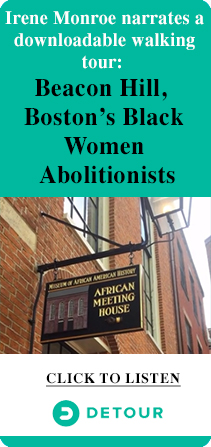If you think the hip-hop generation or Sir Elton John created “bling bling” in the pop entertainment realm, you’re wrong. It was the bejeweled, gaudy and glitzy piano man we know as Liberace (1919 – 1987).
And if you only know of him from the current HBO docu-drama, or not at all, then you must have come-of-age after the uber-flamboyant “Mr. Showmanship,”W?adziu Valentino Liberace, known as Lee among close associates, bedazzled audiences worldwide with his glitterific performances.
While there were always homophobic innuendoes about Liberace’s on-stage attire, like his clam-collared, caped, pearlescent tuxedo, white Llama fur coat with sixteen foot train, interspersed with sequins and rhinestones or his famous tuxedo with the “diamond buttons” spelling out his name, there were also very public and disparaging statements about his sexual orientation.
In 1956, the British national daily tabloid “The Mirror” outed Liberace—depicting him as “…the summit of sex—the pinnacle of masculine, feminine, and neuter. Everything that he, she, and it can ever want… a deadly, winking, sniggering, snuggling, chromium-plated, scent-impregnated, luminous, quivering, giggling, fruit-flavored, mincing, ice-covered heap of mother love.”
Liberace sued and empathetically declared in a London court he was not gay. And, not surprisingly, his fan-base believed it, too.
Public friendships with renown actresses like Debbie Reynolds, Betty White, and comedienne Phyllis Diller, public statements about his ideal female spouse, and articles like “Mature Women Are Best: TV’s Top Pianist Reveals What Kind of Woman He’d Marry,” masterfully concealed Liberace’s no so down-low farce.
In a 2011 CNN interview White stated, “she often served as a ‘beard’ (slang term) to counter rumors of the musician’s homosexuality.”
1982, Liberace was permanently out of the rhinestone closet. Lee’s 22- year old chauffeur and live-in boy toy, Scott Thorson sued the piano man in a $113 million palimony suit. Liberace died five years later of an AIDS- related illness.
Since his death in 1987, Liberace, for the most part, has vanished into obscurity. He’s especially absent to a younger generation. The recent HBO’s biopic “Behind the Candelabra,” might revitalize this long lost legend.
“Behind the Candelabra, ” is a docu-drama based on Thorson’s five-year relationship with Liberace. Thorson is currently behind bars at Washoe county jail in Reno, Nevada and is diagnosed with stage 2 colon cancer.
Mat Damon (Did you glimpse him in the jewel-encrusted crotch Speedo?) portrays Liberace’s lover, and Michael Douglas masterfully portrays Liberace. Watching “Behind the Candelabra,” I’m reminded that Liberace is pre-Stonewall, and pre-AIDS.
The LGBTQ advances like hate crime laws, the repeal of “Don’t ask, don’t tell,” the legalization of same-sex marriage in many states, and homophobia viewed as a national concern, can shade Liberace as a relic of a long lost closeted era—with no relevance or importance to the LGBTQ movement.
Liberace was significant in many ways. He was both outrageously courageous and colossal in an era in Hollywood, of all places, where being openly queer would derail one’s career.
“By spinning his flamboyant personality into fame, he managed to Americanize the closet, democratize it, fit it out with transparent walls, take it up on stage and demand our complicity in his ‘open secret,’ ” Dave Hickey’s wrote in his 1992 essay “A Rhinestone As Big As the Ritz,” about he neglected superstar.
Sadly, both straight and queer audiences have neglected Liberace. Much of Liberace’s declining popularly has to do with a fading audience of mostly heterosexual blue-hairs, and midwestern elderly straight couples. The queers of his era were never part of his fan base.
Although both Liberace and Rock Hudson were closeted about their sexual orientation the whole of their performance lives, when Liberace died in 1987 he didn’t have the appeal, respect and wide LGBTQ fan base as Rock Hudson did. He never rebranded himself for younger generations thinking, I surmise, his blinding flashiness was timeless.
In truth, his performances, with all its “bling bling”, grew old and tired. The Liberace Museum in Las Vegas, where Sue O’Connell, editor of the paper, was once hushed by the staff for speaking of Liberace’s gayness openly in the museum,is soon to close. His audience was not one that replenished.
“Behind the Candelabra,” recovers a long lost gay legend.Liberace might be of an era past, but perhaps he’ll no longer be forgotten.



